Thought I'd post a few images of the field processing of the giraffe bull. I shot him at 7:52am and we were working hard till close to 3:00pm to get him skinned and broken down. He fell in a pretty handy position with awkward but relatively good access for the vehicles but the skinning was a bit awkward at times.
From here the meat was transported to a wild game abattoir in Musina that specialises in processing hunted big game. The top cuts stay in camp and a few make there way to restaurants. The rest of the meat is sorted into two grades which are boned, cleaned and diced and used to make sausages and mince that sells for a few rand a kilogram to locals. Some properties keep the meat for the people living on the property and in the wild country (outside of South Africa) the locals take home a sackful of meat each from all the game shot on safari.
From here the meat was transported to a wild game abattoir in Musina that specialises in processing hunted big game. The top cuts stay in camp and a few make there way to restaurants. The rest of the meat is sorted into two grades which are boned, cleaned and diced and used to make sausages and mince that sells for a few rand a kilogram to locals. Some properties keep the meat for the people living on the property and in the wild country (outside of South Africa) the locals take home a sackful of meat each from all the game shot on safari.
Enjoy this brief photo essay.
With the opening incision in the foreground, Reckson runs his blade along the length of the spine to the base of the skull - the cape will be tanned in Pretoria and then back home for a shoulder pedestal mount. Big job ahead of us!
The bullet exit wound is clearly visible in this photo, quite high on the shoulder. That shot took out the blood vessels at the top of the heart and perforated the atrium. Bullet was a 500gr Woodleigh solid cruising along at 2,380fps - approximately 2,260fps on impact - that's 5,858ft-lb of energy, about twice the energy you might get out of a .308 Winchester at the muzzle.
The missus snapped this picture while I was watching the early stages of the skinning operation. These guys are very, very good at what they do, not a nick in the skin in 7 hours... but I guess it would be difficult to "nick" a skin that is 2-3" thick!
Good progress being made on the cape; a quick smoko for the team before we start working on the back skin. With the skin off, the giraffe reminded me of a big Hereford bull - he even smelt bovine with the skin off.
Once the skin was all but off on his left side we had to roll the old boy to finish the job. The entire team put in some grunt to roll the giraffe; the slope helped us but it was still a huge effort to roll the 1,500kg+ bull. Having rolled the giraffe, Reckson and Ernest start working off the cape on the other side. Check out how thick that hide is!
After dropping the gut, Reckson pulls out the heart and lungs, Our tracking and skinning team were all Venda and in their culture they place a very high value on meet, particularly offal. When we were done they laid out all of the organs they had set aside and divided them equally.
Reckson split the rumen and scraped out its contents before hanging the sac in a low branch. I eat tripe and am a huge fan of offal, but leaving the rumen hanging with the flies for two hours was enough to put me off trying the giraffe's tripe, especially when there was so much excellent game meat in camp. Back at camp the tripe will be washed in salted water and boiled.
The boys break the last limb off the carcass, a shoulder (every thing was so big!) while our PH Floris oversees the loading of the final shoulder onto the bakkie. A giraffe produce a lot of meat!
As the whole operation came to a close, we winched the cape with the head still intact onto the Eddie's Toyota. Reckson spent the rest of the evening and into the wee hours skinning out the face, splitting the lips, nose and eyelids and turning the ears ready for an overnight saking in a salt and disinfectant brine before being laid out with 1,100 pounds of salt!
That little puddle down slope of the Toyota is all we left behind: the small intestine, the contents of the rumen and a puddle of congealed blood. I was really impressed at how much of the bull we were able to utilise; whenever we had access to the right facilities and a water supply Reckson and Ernest were able to recover every part of the animal, even washing out the intestines.
Reckson and Ernest ride atop the load on Eddie's Toyota; there was a bit of rough driving to get out of the reserve. I was sitting on the back of the Land Rover now with the .300 Weatherby in hand, keeping an eye out for a warthog boar in the late afternoon sun. This river crossing will be under water come December.





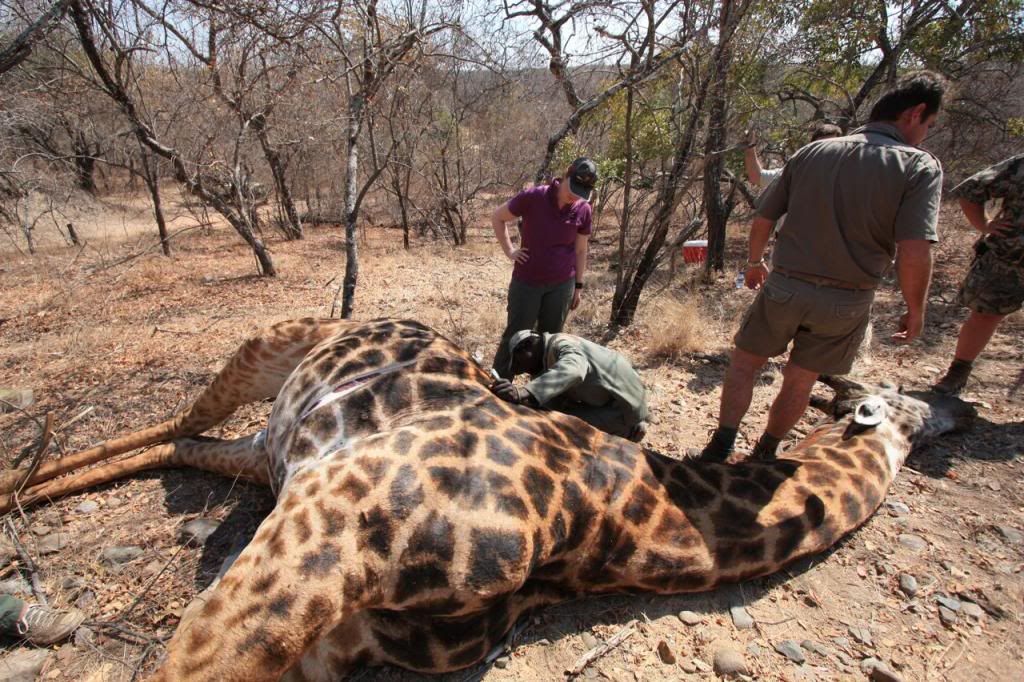

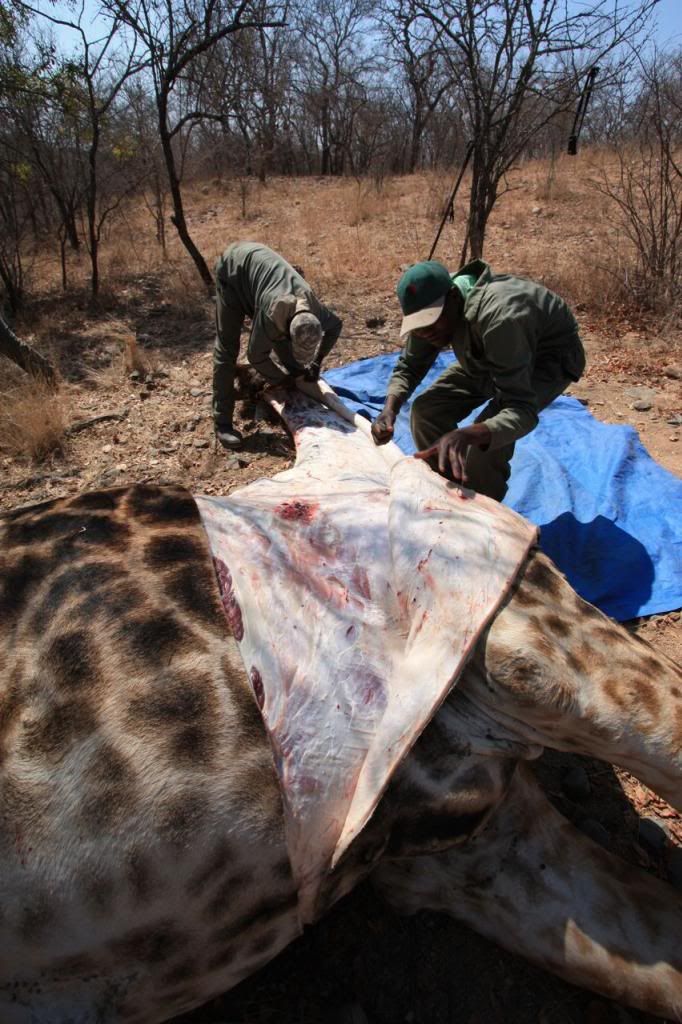
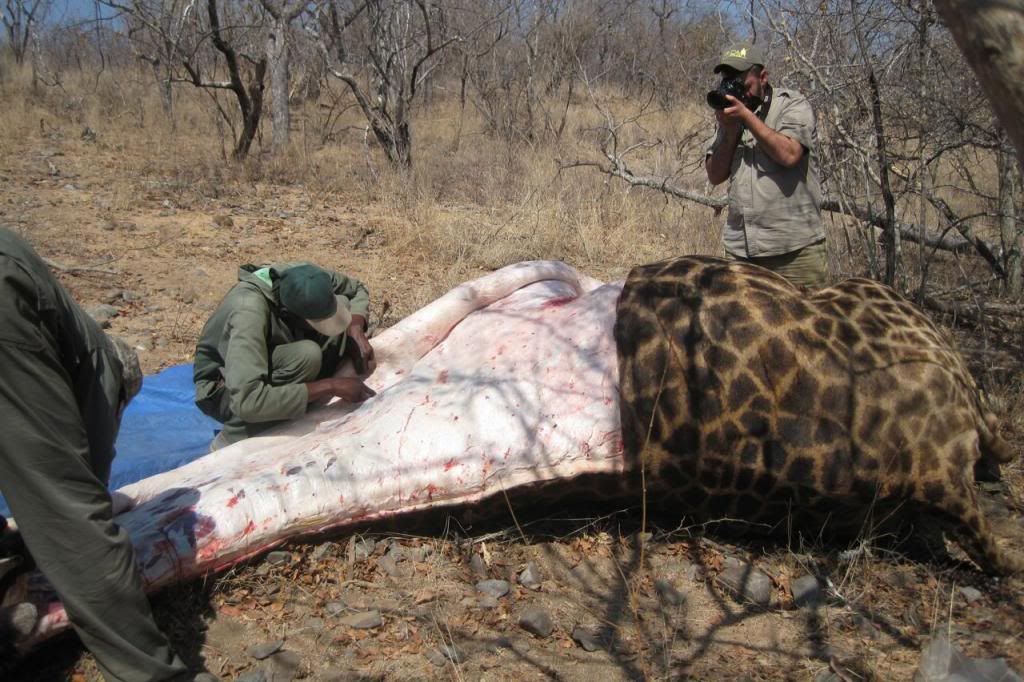

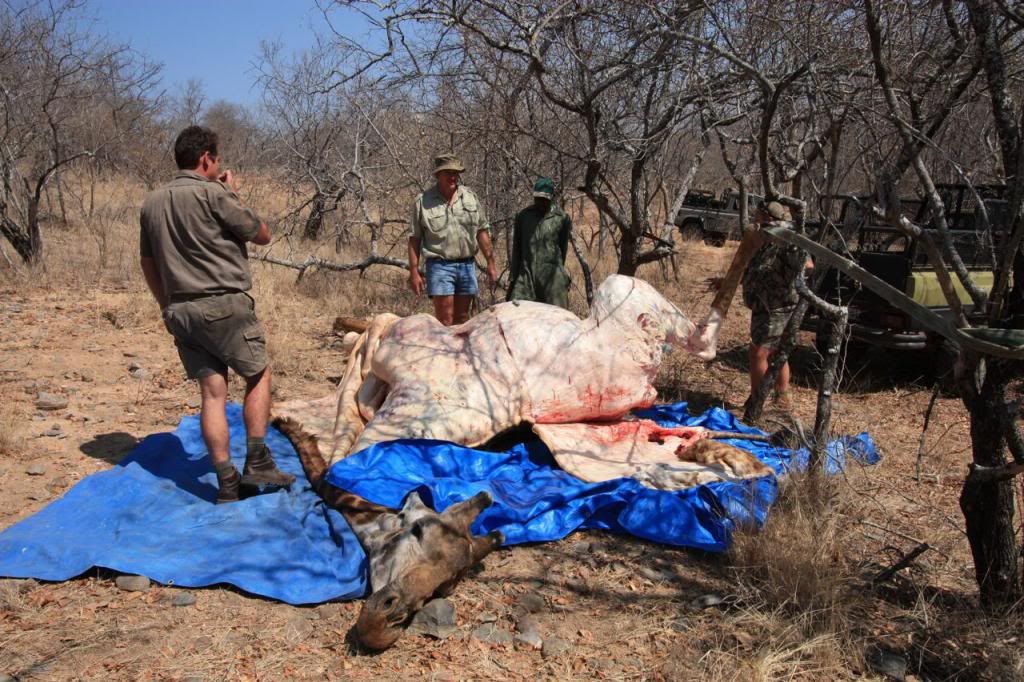
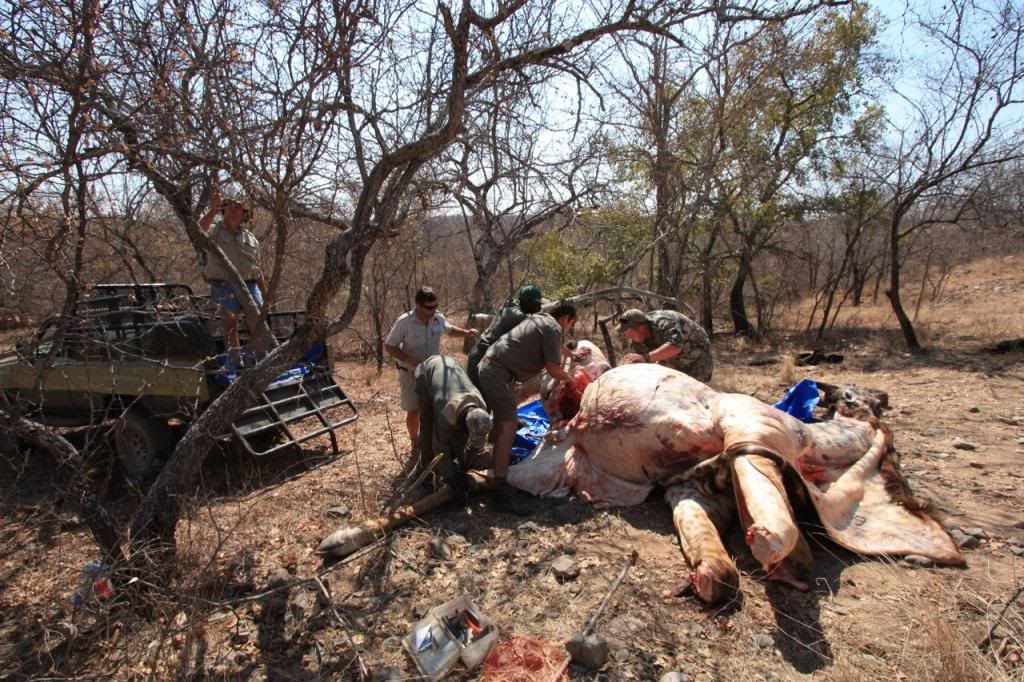
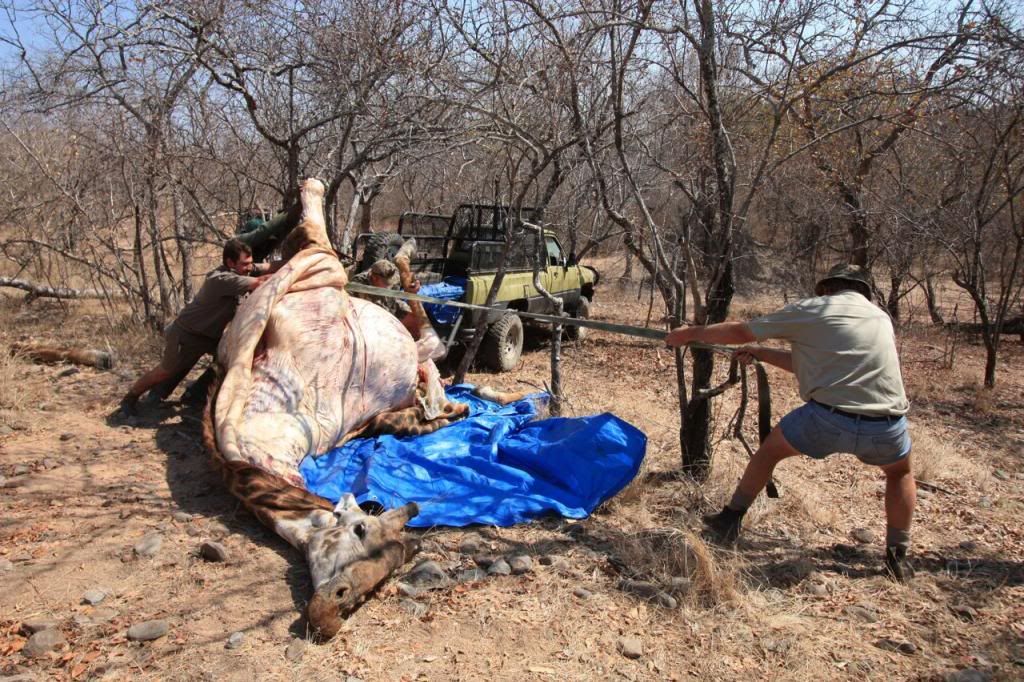
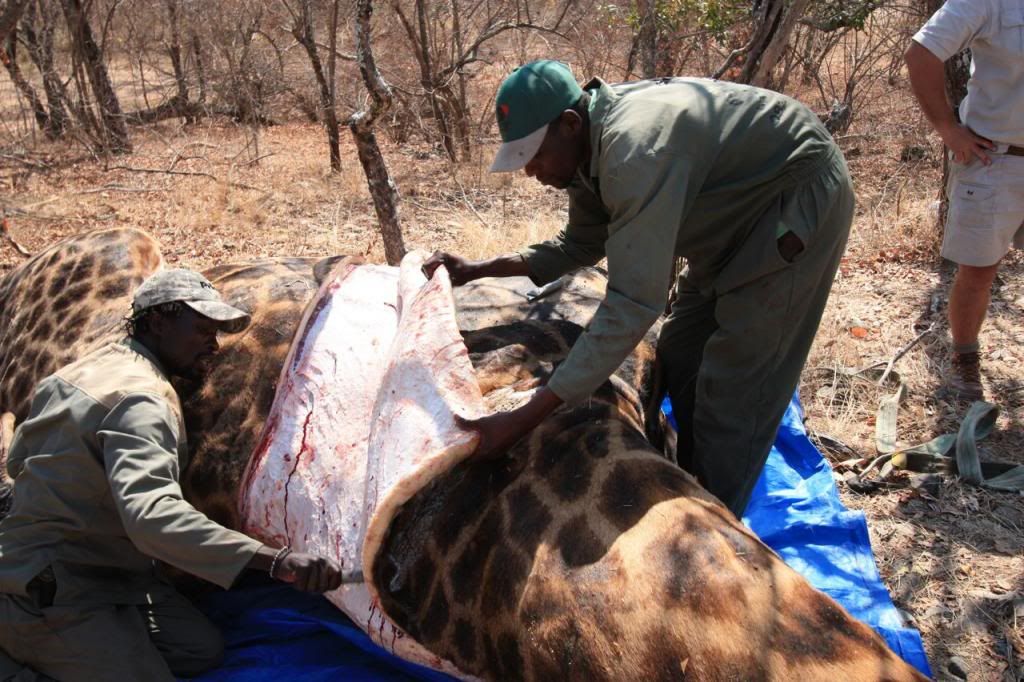
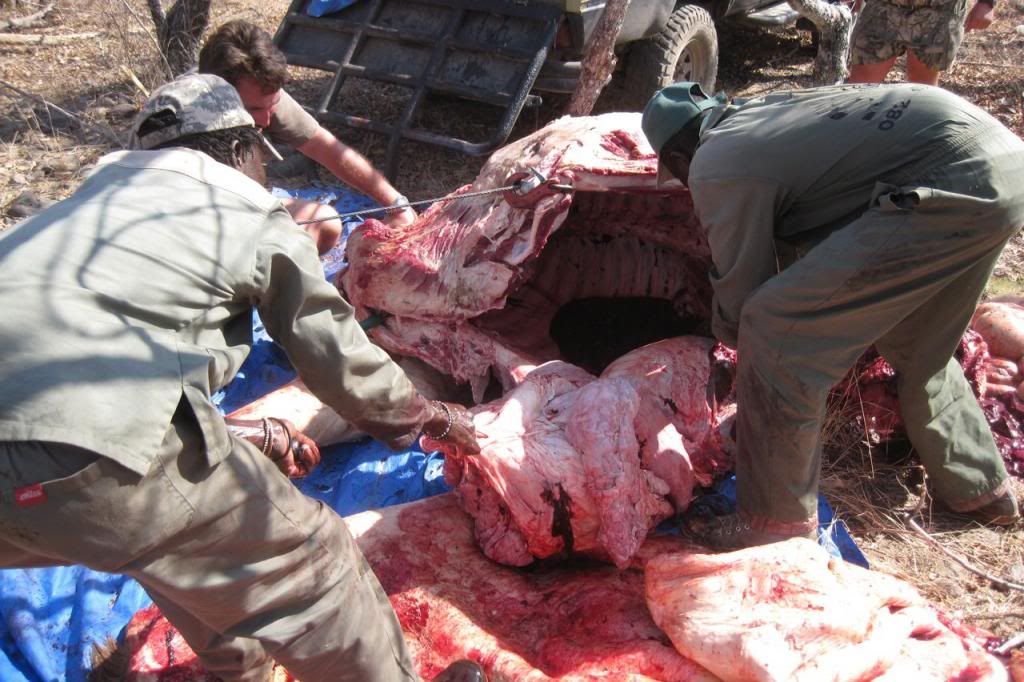
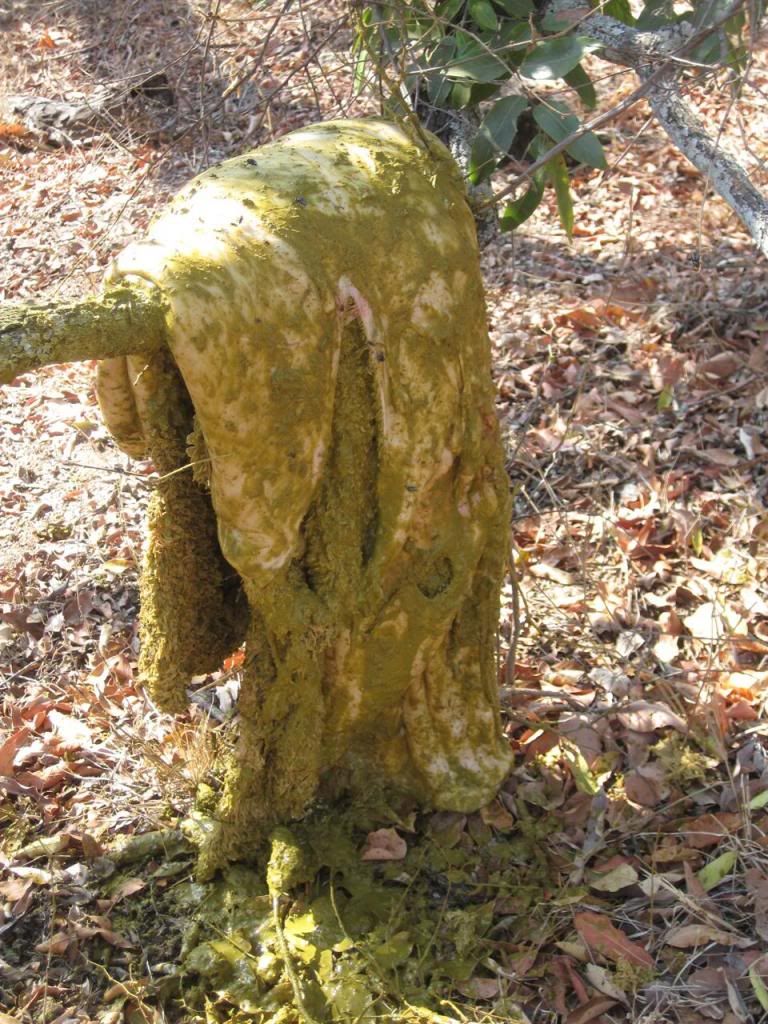
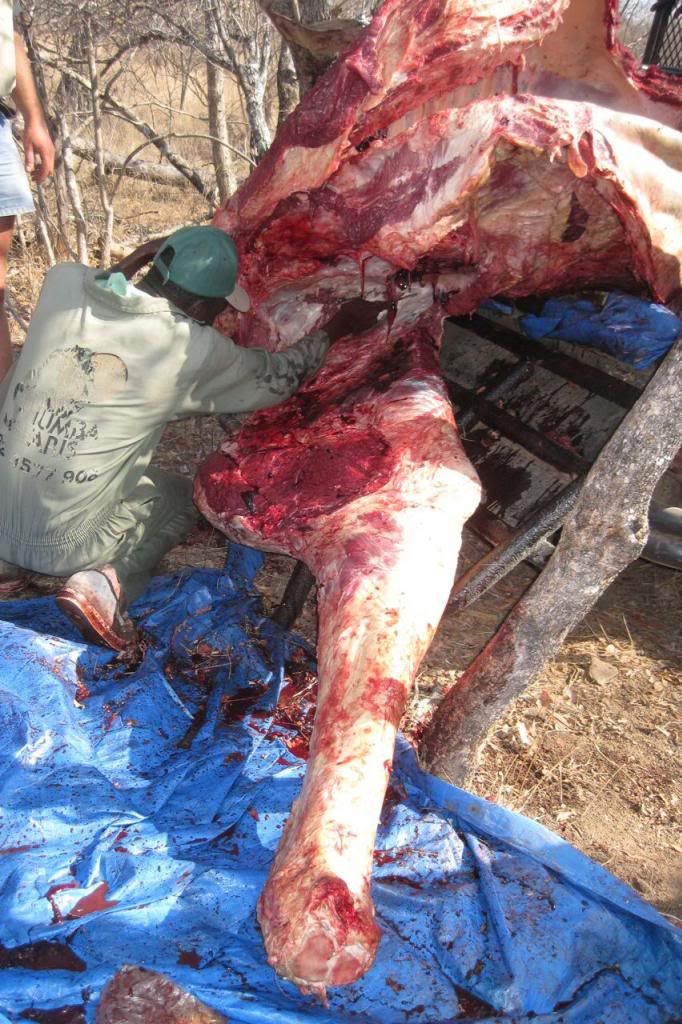
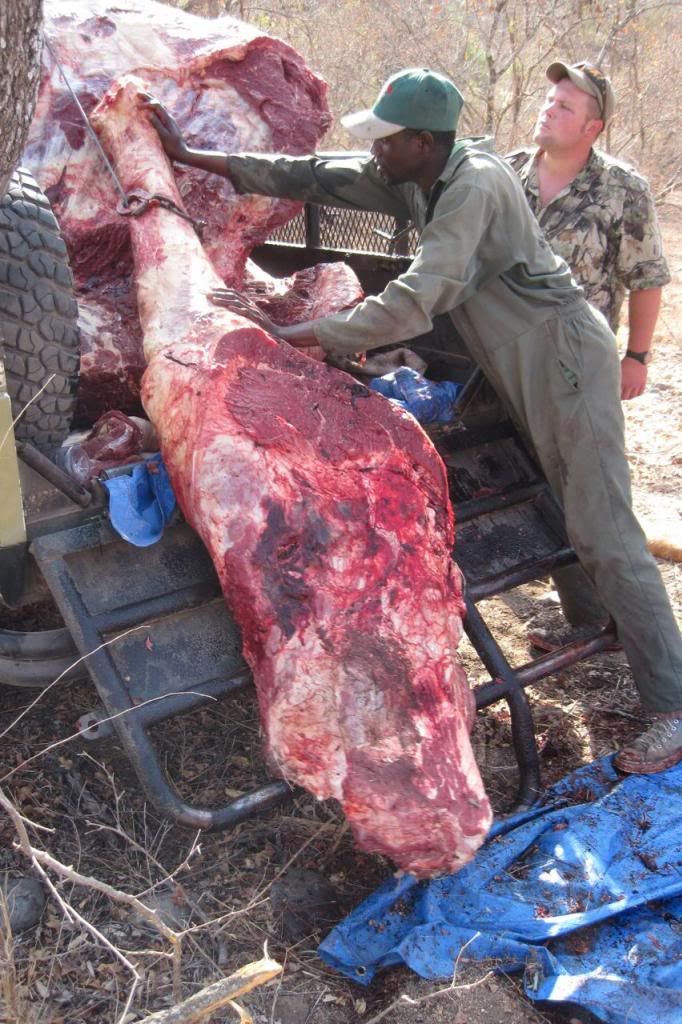
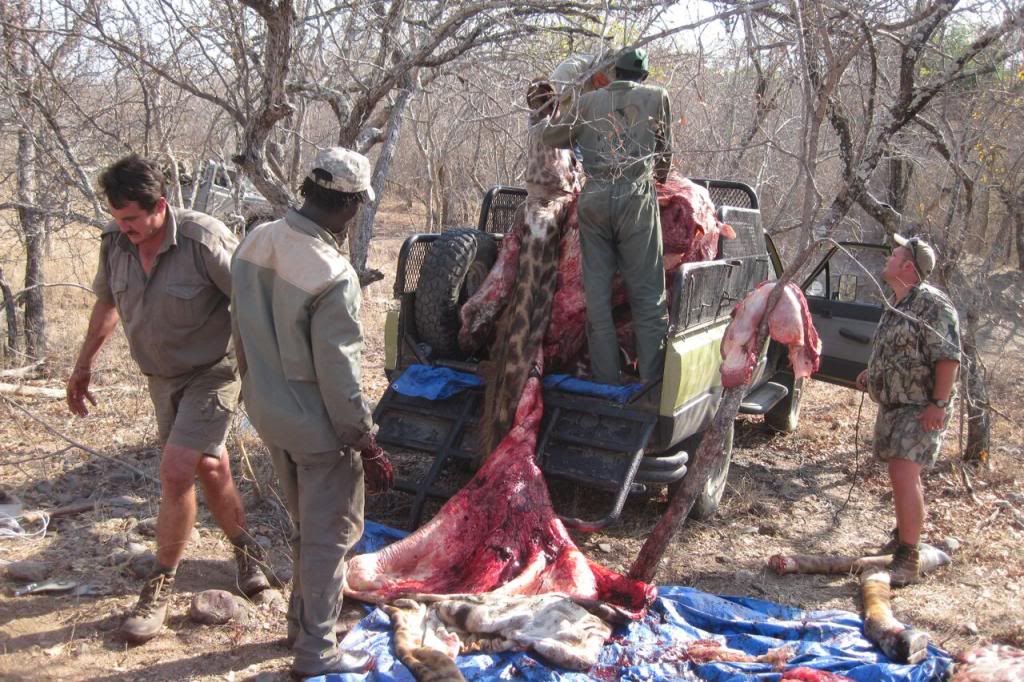
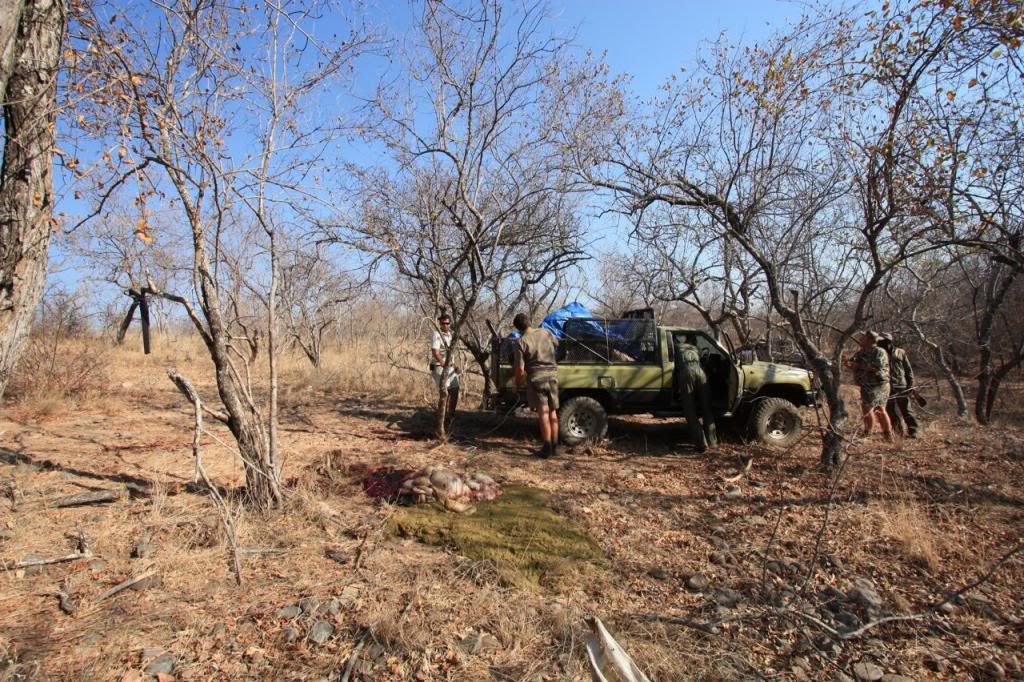
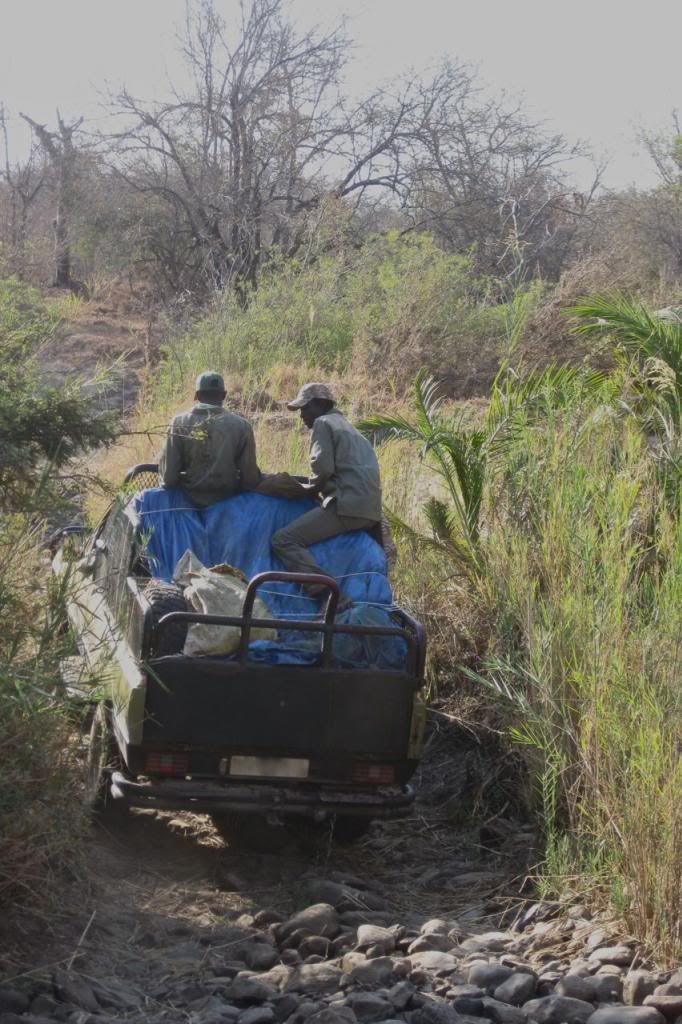
You are all insane. This creature poses no threat. You are. This creature is near extinction. To exterminate such beauty is obscene. You are guilty of such a travesty on life.
ReplyDeleteHello Anonymous - my name is Dan. So you're not fond of hunting right? You are most welcome to visit but I thought I should point a couple of things out. You know this is a hunting blog? Mostly about hunting? And guns. Sometime taxidermy.
DeleteNot to worry.
I admire your very passionate yet anonymous post, however I think you are lacking a few facts which would be worth providing you right here, right now. For next time you visit. Here's the deal and I'll keep it really short...
Humans have built cities and roads and stadiums and borders and shops and schools and factories and telecommunications facilities and movie studios and wet and wild them parks and that has effected where wildlife can exist and to what extent said wildlife can roam its habitat.
As a result, some clever people have set aside large tracts of privately owned land for wildlife. They have taken away all domestic stock and internal fences, some have dropped their fences all together. All for the wildlife. Most of these landowners are looking to make a dollar, even if the sole purpose the funds generated are for the maintenance and paying wages to staff to manage the property.
Unfortunately these parcels of land (which may be tens or even hundreds of thousands of acres) have a limited carrying capacity. So the owners of the land and the government wildlife authorities review animal numbers and the condition of the habitat and make some decisions about how many of each species should be removed in order for that land to continue to provided good habitat for all species - a balance for the trees and the grass as well as the antelope and the predators.
Same old bullshit, as always. You, who enjoy killing so much, are obscene and low, sir.
ReplyDeleteAgree - mostly the same old bullshit - insane, obscene, disturbing, low. Why not spend your time somewhere where you can enjoy making your enlightening posts without anonymity? This blog is mostly about hunting and related experiences - why not try googling "growing daisies from cuttings" instead?
DeleteThis is very disturbing.
ReplyDeletePatrice, we're butchering meat. It so happens to be a giraffe, but I don't understand what you find so disturbing. Regardless of what your thoughts are on hunting, what is presented here is a series of images as we process the meat for human consumption. What would the difference be if it were a cow? Shorter limbs, that's all.
DeleteWhite America loves to kill, it been their nature to kill anything without regard!!!
ReplyDeleteNo white American here, but thanks again for visiting. Dagga'
ReplyDeleteDagga, thanks for posting and your defence of hunting. Your detractors obviously don't (or don't want to) understand the differenced between illegal poaching and hunting. They don't understand that game reserves work to promote the viability of a species. They buy steaks and chicken from factory farms where the conditions are utterly appalling without batting an eye. I feel sorry for them in their ignorance.
ReplyDeleteAnyway, good post mate! Thanks
Thanks for your positive contribution on this post. Your comments are absolutely correct. We can't all love everything that goes on in the world, but things won't stop happening just because individuals don't like them. As you pointed out, the game reserves exist to protect species and part of that process is animal population management to make sure that the habitat and its utilisation by the many species that rely on it is not threatened. Sometimes this means the removal of a portion of the population.
DeleteGame reserves that allow hunting are able to create significant revenue from sport hunters; the alternative is paying for choppers and professional shooters or game capture teams, both viable industries in their own right but neither of which can create significant revenue through the removal of specific individuals.
Look forward to hearing from you 'round the blog.
Yuck...so sad.
ReplyDeleteHello Krystalle - once again, welcome to another non-hunting lady!
DeleteYou may be vegetarian, in which case I understand the "yuck", however for most of us omnivorous humans we rely on meat for a significant portion of our diet. Cattle, sheep, goats, pigs, deer, antelope, snakes, frogs, snails, fish, molluscs, chickens, pigeons, quails, pheasant, duck goose, and yes, even giraffe.
The fact that giraffe is not on the shelf of your local supermarket does not discount the species as edible meat. We had a number of very beef-like meals from this old bull in the days following our hunt and the rest of the carcass was processed at a licensed game meat abattoir where it was made into sausages and ground (minced) meat which is sold at a very modest price to families that may otherwise not have access to protein.
As far as your "so sad" comment goes - for the individual animal I guess this could be considered sad if you thought it appropriate to attach emotion to a giraffe.
On the other hand, you could consider that this bull had been suffering from an infection from a lion attack for over 6 months - that could be sad.
Being at the very late stages of his life, eventually he would fall prey to lions or hyenas and be torn apart whilst still alive. That could be sad too.
He may have died in the summer of dehydration or starvation. Sad? Certainly slow. Ouch.
And of course, then we have the fact that the South African office of Nature Conservation determines how many animals need to be removed from each reserve based on population counts and carrying capacity. There were a number of giraffes earmarked for culling on this reserve. Had the old bull not been hunted, fairly and squarely by a sport hunter, then he would have fallen to a bullet from a professional shooter in a chopper. Possibly left to rot. Is that sad?
Krystalle, I think you need to consider the bigger picture, but as always, I very much appreciate your visit and your feedback. You are very much entitled to your opinion and we don't have to agree!
Come again soon :) Dagga'
Could you please describe the texture of the meat? Also, did you cut the throat to drain the blood before butchering; or rather - how do you get the blood out of animal so big?
ReplyDeleteThe meat reminded me in every way of beef. While we were filed butchering the carcass smelt the same as Brahman cattle that I have butchered here at home; a meaty smell with the distinct aroma of a good layer of fat!
DeleteAs far as the eating goes - as a boy, times were pretty tough in the house where I grew up so when we ate beef we ate the cheap cuts - big, blade steaks with it's tough connective tissue and chuck stewing steak, a messy portion from the same sub-primal as the blade. My mother cooked them long and slow and the meat would be tender, with long fibrous grain; I remember pulling the steaks apart into clumps of stringy meat. Wonderful.
Giraffe was much like these tough beef cuts - cooked slowly, it reminded me of the same stringy grain, just coarser.
As far as bleeding the animal goes - while all of the meat is recovered, the priority in my safaris is trophy hunting and as such, no throat is cut, and generally there is not a single incision made into the body cavity until the cape or full skin has been removed.
You'll see in the first nine images above that as we remove the skin, the animal is entirely intact and only after the skin was completely removed (we brought everything home) was the carcass split at the sternum and allowed to drain.
Hope this helps Derek. Thanks for reading.
Hunting once had a purpose, that time has passed.
ReplyDeleteI guess it would be interesting to hear your thoughts on what purpose hunting served in the past. Meat? Skins? Sport? Ritual? Cultural?
DeleteHistory tells us that all of these reasons are true. What's the difference today? I can buy a steak at the store just as my clothing can be bought. Sport is more of an armchair activity and ritual or culture are possibly a bit taboo...
Because you choose to use the machine that mankind has created to source your meat, you have no need or desire for animal hides and your sense of adventure can be satisfied in a park, that's no reason for hunters to do the same.
It's disappointing that mankind has become so narrow minded. As always, come again! I appreciate your time to visit and make a contribution and very much respect your position on the subject.
Absolutely fascinating. I found this post after searching for the boned-out weight of a giraffe (after watching a "Wild Kratts" with the kids) and I couldn't have been happier with the results of my search!
ReplyDeleteDagga, your enormous patience with certain commenters shows you've been doing this for some time, and I agree with the points you raise.
I've done my share of moose, and I thought *those* were big - but your giraffe makes a moose look like a field mouse! Did you help dress it out, or did the guides do all of that?
Adam, my wife and I were very hands on processing this bull giraffe. It was an amazing to skin and butcher at such scale!
DeleteYou guys that all do Big Game Hunting are dam fools. you believe that "oh one more more won't hurt"but the whole time it did. because have the animals you guys hunt are own the IUCN Red list for being endanger. that what happen to a lot of the rhinos. shit they said that in past 15 years the mammal population has drop 40%. and the giraffes are down to 80,000 left in Africa when 15 years ago that there where at 140,000. so where ever you get facts that the national parks and wildlife places call you guys or who ever to kill those animals or any animal is a lie. Most of you guys hunt to just get money from them that why a lot of rhinos and elephants population's have drop like a rock for what there dam ivory. you just cut the ivory of the body and leave the corpse to riot. So think about how do feel when you guys kill a animal not food like you all say but for the money that pretty much it. Because Big Game Hunting have put a lot to most of the animals extinct or almost extinct. And once you guys figure it out. You will under stand that this hunting game's to you guys have a big impact to our ecosystem.
ReplyDeleteAnonymous - let's not hunt, let's leave it to sort itself out. Understand we will have to give up all property ownership, drop the fences and vacate the cities, leaving the roads empty for the game to roam - wild and free. That would fix it. Totally. Lucky for us, humans are very reasonable and I expect we'll have this resolved by Tuesday. Too complicated for you? Have a look around friend.
DeleteI thought that people would have learned there lesson after the extinction of the American Buffalo. It makes me sad to see such a docile and beautiful creature killed that poses no threat to local agricultural grounds. I respect that you are utilizing all parts of the animal but I don't see the reason for it's death regardless of carrying capacity in privately owned land. As an intellectually advanced being it is our responsibility to preserve these species so that future generations may enjoy its presence on earth. No matter how legal it is it's our job to say no to private land owners in order to preserve these species and to avoid selling the animals body parts for our own material wealth. In this day and age we should be thinking of others whether human or animal not the prestige or wealth that will be received from others by killing such a creature. I'm no vegetarian eating fool and I understand the logic behind hunting certain animals, but all I'm trying to say is that we need to be smart and say no even when granted permission in order to keep this amazing creature alive. Thank you.
ReplyDeleteJim Jimmy I appreciate your carnivorous thought but must respectfully disagree. I said a few things to anonymous a few minutes ago, perhaps you should start there. There's a lot on my blog and plenty has been published about why there needs to be some hunting or culling of Africa's Big Game.
DeleteYou don't have to agree, but you most certainly need to have a long hard think about what we've done to the planet and how we manage the modified environment; we made it.
I appreciate your well considered thoughts Jim.
That is one big giraffe. I wanna try it. Also, did it stink in anyway like decomposition smell or anything?
ReplyDeleteThanks you for your comment John. The hunting was excellent for this very unique species. I've hunted giraffe in Zimbabwe and South Africa and they can be very challenging to hunt when your deliberately stalking them. Like anything, chance encounters can make for a very easy hunt!
DeleteThe stinkbull label is often given to old bulls; their smell is believed to come from their antibiotic and parasite repellent rich fur, also thought to be a part of their mating ritual.
There was no particularly strong smell when we approached the dead bull. He had an infection on his left shoulder from a lion attack and that didn't smell great when you really put your nose to it. I recall the smell of a slaughtered beast - the smell you'd expect at the home kill of a fattened beef animal. Quite peasant but I'm a keen amateur butcher.
The Venda trackers and skinners that formed our crew on this Safari wanted the stomach and intestines to take home in addition to their share of the meat. Splitting it open and scraping out the half digested contents wasn't so pleasant! A wonderful opportunity to be part of another culture and great memories!
Ok. Ive always wanted to try giraffe. Thanks for the opinion and experience.
DeleteLooks like you had a fun hunt and great follow up getting in on the processing there is not a better way to remember the hunt than that. I like moose hunting but Africa seems a bit hot for me.
ReplyDeleteThank you Rob for your feedback. This was truly hot weather hunting, no doubt about it, we were exhausted by the time we got back to camp!
DeleteMoose hunting in the cold weather, now that's an adventure I would love to tackle and it's very much on the tip of my list should I ever head out to your side of the world!
I stumbled on this post by accident and just wanted to say how impressed I am with the way you conduct yourself. I've never hunted or had any exposure to hunting at all and have only recently come to see the value in hunting animals like these after probably being in the past as vehemently opposed as most of the commenters here. Nothing else to say - just wanted to know how impressively you come across as an ambassador for what you are doing.
ReplyDeleteI'm very pleased with your thoughts concerning our hunting and it's quite an honor to be called an ambassador for the sport. You're most welcome here and I'll continue to do what I can to impress! Particularly when it comes to the non hunters in the community. Cheers! Dagga
DeleteAs a lifelong city dweller who's never owned a gun or killed an animal i was always puzzled by "trophy hunting" until a friend explained to me (a Safari Club member) that trophy animals are at the effective end of their life and as such are likely to fall ill to disease, predation or starvation especially if expelled from a group by younger challengers. This opened my eyes to the value of trophy hunting. I appreciate your explanations as well and look forward to visiting your site in the future.
ReplyDelete